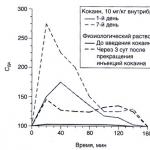Many folk remedies cope even better with greasy stains and dirt on furniture, tables, chairs, cabinets, countertops and other kitchen furniture than industrial chemicals. Such cleaning products, which can be prepared at home, allow you not only to wash off grease from kitchen appliances but also save time and money.
If we compare household chemicals sold in stores, with folk remedies, the latter are safer for humans and can become a great assistant in the fight against dirt in the kitchen.
Before you begin removing grease from the surfaces of kitchen furniture, you should select suitable cleaning equipment. It is worth choosing a more gentle tool - a sponge, soft cloth, microfiber, cloth, flannel. Any of the materials can perfectly remove grease from kitchen furniture. No need to use metal brushes: Using such products may cause scratches and other damage to the furniture.
Damaged furniture gets dirty much faster: scratches become clogged with grease, plaque and dirt.
When cleaning the kitchen, you should use rubber gloves for the safety of your hands and nails.
Before completely washing the furniture from dirt, you should check the quality of the product on a small and inconspicuous area of the furniture. This measure will protect the furniture from damage.
Various cleaning products
You can use the most different means, which can be found in every kitchen. You need to choose one or another product taking into account the types of stains and types of furniture that need to be cleaned.

Baking soda against stains
A simple way to clean furniture is to use baking soda. It can be washed glass surfaces: dishes, inserts in the set. It cleans plastic parts well in the kitchen (refrigerator doors, household appliances). You should moisten the stained area and wipe it with baking soda. Wash off any remaining substance with a damp cloth.

You can use soda to clean soft seats in the kitchen.
First you need to wet the seat with water. Then sleep heavily greasy spots soda and start cleaning them with a brush. Afterwards, you need to leave the soda absorbed into the furniture for 15–20 minutes. Then collect the powder with a vacuum cleaner.
If the stain remains, you can try diluting one tablespoon of vinegar with one tablespoon of dishwashing detergent in 250 ml of water. The product is applied with microfiber to the stains. The seat should be wiped with a clean damp sponge.

Laundry soap and soda
Both soap and soda are effective means in the fight against grease on the surface of furniture. Both components can individually cope with stains, but together they allow you to achieve the desired result.

To prepare a cleaning product from soap, you need to grate it on a coarse grater into a deep bowl. You need to add a little warm water to the soap shavings. The solution should become cloudy. The resulting product must be applied to contaminated areas using a sponge. While the solution is still wet, apply a small amount of baking soda on top and treat problem areas. The consistency is washed off twenty minutes after application.
Soda in such a solution is an abrasive agent that will help thoroughly wash contaminated areas.
Soapy soda solution is great for metal and plastic surfaces. Should not be used on glossy or varnished surfaces as scratches may occur after cleaning.
It is important to remember that laundry soap must be dark brown. If the soap is bleached and has a fragrance, then it will not be able to cope with stains in the kitchen.

Cleaning furniture with vinegar
Good for fighting fat table vinegar, you can use apple cider vinegar. In addition to furniture, countertops and tiles in the kitchen, you can also clean limescale from objects made of metal and ceramics and get rid of scale in teapots.
You need to add a little water to the vinegar. Apply the resulting solution to the greasy stains with a rag and wait until the grease comes off from the surface. Then the set should be wiped with a damp soft cloth.

Baking powder for grease stains
Baking powder will help you quickly clean your kitchen utensils.
You need to prepare a paste of baking powder and water. The product is applied to a dirty surface and remains on it for half an hour. Then it is washed off with water.

Anti-greasy alcohol
Alcohol or vodka removes grease stains perfectly. The product cleans well modular furniture and regular headsets coated with a glossy surface. Before processing furniture, you should open the windows in the kitchen.
To make the product, you need to dilute one tablespoon of alcohol in one liter of water. For cleaning you can use a sponge, rag and spray bottle. Using improvised means, treat kitchen furniture and leave to clean for half an hour. You can remove the solution with a regular damp cloth.
Vodka is also good for combating pollution. In this case, you can simply moisten a sponge in vodka and wipe the greasy surface, and then rinse with water.

Disinfection and cleaning with alcohol and vinegar
An excellent product that not only fights grease and dirt, but also disinfects furniture from bacteria and germs.
To prepare the solution, mix table vinegar, alcohol and vodka in a ratio of 2:1:1. You can add a third of a teaspoon of any essential oil.
The resulting mixture must be used to clean dirt using a spray bottle. The solution should remain on the contaminated areas for ten to fifteen minutes. Then you should wash off the solution with a napkin or sponge. After using this mixture, the aroma of essential oil will emanate from the furniture.

Essential oils for cleansing and pleasant smell
Essential oils with other components do an excellent job of cleaning furniture.

In order to get rid of unpleasant odors and effectively care for surfaces made of wood, you will need essential oil of spruce or eucalyptus. Add a few drops of oil to a container of water and then wipe the wooden surface with a sponge.
You can prepare a mixture of orange and eucalyptus oils with vinegar and vodka. You should take half a glass of vodka, half a glass of vinegar, half a teaspoon of orange oil and a few drops of eucalyptus essential oil. Mix the solution thoroughly and pour into a spray bottle. Apply the product to greasy spots for 20 minutes. Afterwards, rinse with a damp cloth.
This recipe can cope with dirt not only on wooden surfaces: it helps fight limescale on metal surfaces and washes plastic and ceramic parts.

Lemon as a detergent
A lemon slice effectively and safely fights fat. In addition to furniture and other surfaces, you can use lemon to clean tiles and remove scale and limescale.

It is necessary to wipe the furniture with lemon so that the juice drains from the surface. After ten minutes the set can be washed warm water and wipe with a paper towel.
Citric acid from all types of pollution
Solution from citric acid– an excellent remedy for stains on furniture. To prepare the solution you will need one liter of water, 15 grams of citric acid and a little detergent. The liquid should be applied to problem areas and then wiped with a damp cloth.

The acid can be used as an anti-scale agent in teapots and to clean limescale deposits on metal and ceramic surfaces.
Vegetable oil and soda for all types of headsets
The furniture will be clean if you use a product made from vegetable oil and soda.

The product is great for cleaning wooden surfaces, sets and furniture made of MDF and solid wood, cutlery, tables, chairs, shelves, doors, frames and dishes.
It is necessary to prepare a slurry that will resemble sour cream in consistency. To do this, you need to take vegetable oil and soda in a 2:1 ratio. Apply to areas with greasy stains and treat them with a soft brush. Leave the polished surface for half an hour. Then remove any lumps of fat using a cloth. May be required reprocessing headset, right the first time greasy coating may not leave the surface.
By using an oil and baking soda scrub to clean your kitchen, you can achieve sparkling cleanliness and also perfectly protect your furniture from high humidity in the kitchen or drying out from high temperatures.
This mixture should be used once every two weeks.

A mixture of clay and vinegar
A product made from clay and vinegar will perfectly remove stains in the kitchen. The product is suitable for cleaning wood and solid furniture, floors, walls, tiled surfaces and pots.
To get a mass for cleaning, you need to add a little vinegar to the clay. The product is applied to a sponge and the surface of the headset is wiped with it. After the procedure, the surface should be washed with water.

The clay in the cleaning product acts as an abrasive substance. You should choose clay without stones, as they can damage the furniture during cleaning.
Mustard powder for kitchen furniture
The product is suitable for cleaning any surfaces from dirt.

Mustard dissolves fat well, so after washing, dirt and grease will remain on the napkin.
In order to wash the surface from dirt and grease, you need to moisten it with water and sprinkle with mustard powder. Then wipe the furniture with a dry cloth. A damp cloth or sponge will help to completely remove mustard powder.
You can use mustard to clean kitchen units with a protective surface, stoves, sinks, and refrigerators. The powder should not be used on wooden surfaces and MDF furniture.

Anti-stain salt
Salt is great for cleaning wooden surfaces. It effectively removes greasy plaque and prevents the spread of germs and bacteria.
To clean, you need to wipe the areas with dirt and grease with salt.
Can be used once a week saline solution for processing facades and countertops.

Dish detergent
Regular dishwashing detergent can also be used to clean tiles, appliances, kitchen units and other furniture in the kitchen. It is enough to dilute a little product in water and get foam. Treat all contaminated surfaces with it. It is advisable to use the abrasive side of the sponge to scrub off stubborn stains and old fat.
This product can be used after every meal preparation.
Conclusion
There are many cleaning products for kitchen units, furniture, dishes, cutlery, various surfaces, floors and walls. All of them contain chemicals that can cause enormous harm to the human body. Many people are susceptible allergic reactions, difficulty breathing while using such products. Therefore, the advice of mothers and grandmothers, who previously used folk remedies to combat greasy deposits on various kitchen surfaces, comes to the rescue. Such products clean no worse than industrial ones. It is necessary to observe safety precautions when treating the kitchen with one or another cleaner. You should use gloves, ventilate the kitchen during and after cleaning, and keep children and animals away from the substances.
Small yellow droplets that instantly stick to surfaces are difficult to remove. How to remove grease from kitchen cabinets? Standard rags only rub dirt, and not all household chemicals can handle it. It takes a long time to scrub and wash away stubborn grease stains. But there is a danger of damaging the surfaces. Often, the materials from which cabinets or tiles are made immediately leave white marks or, worse, scratches. It is impossible to eliminate them. To prevent such an annoying nuisance from happening, it is worth adopting a few rules of cleanliness.
1
Most main principle, which must be adhered to - do not forget to wipe surfaces daily kitchen cabinets. This way fat will not accumulate. But often busy housewives have a lot to do at work, and at home they only have time to prepare lunch or dinner. When should we fight for purity? On the weekend. In this case, the dirt will have to be washed off with special care and using cleaning products. And they are not always of the chemical type. There are a lot of tips for putting things in order using folk recipes cleanliness.
Fat deposits on kitchen furniture are a common phenomenon; they appear instantly and unnoticed by the housewife. While the most delicious and healthy food is being prepared, droplets of oil fly off from the frying pan and land on different surfaces. They “settle” especially quickly on their favorite light cabinet, which hangs very close to the stove.
The cleaning method and type of detergent will depend on the material of the furniture.
Dust quickly adheres to the yellow droplets of fat, absorbing into the viscous composition. This is also facilitated by the steam that escapes every time you open the lids of pots and pans. It acts as a catalyst, helping dirt to better adhere to fat droplets. Such a raid even hot water don't remove it.
How to clean grease from a kitchen set? In order not to spoil the surface and quickly remove the build-up of kitchen soot, you should first determine what material the furniture is made of. The cleaning method and type of detergent will depend on this.
It is important to have “helpers” on hand. These are rags and sponges with which you can clean your favorite cabinet. It is worth choosing fabrics from flannel, microfiber, cloth. Under no circumstances should you use synthetics or rough materials. And you should completely abandon metal graters. They can only be used to clean old pots and cast iron pans. It’s worth stocking up on the softest sponges.
How to clean grease from kitchen tiles if the coating is a little old? You should let it soak. To do this, it is important to wet the dirt with a solution of soapy water and leave for an hour. Then wipe with a soft cloth and rinse clean water stains and wipe dry. Instead of soap, you can dissolve surface cleaning gel in water.

Cabinets should be cleaned with a flannel, microfiber, or cloth cloth.
If stains need to be removed from furniture, under no circumstances should you clean with powder or a hard cloth. Kitchen cabinets modern manufacturers covered with a protective film, but even then you should not take risks using an abrasive agent. You need to carefully study the composition of the gel or other liquid for cleaning surfaces. If you need to clear fat from wooden cabinet, the composition should not contain ammonia, acids, or chlorine.
To ensure that you do not harm surfaces when cleaning the kitchen from grease, it is better to first test the detergent on an unnecessary board or tile. After observing how the gel behaves and making sure that it does not damage the materials, you can begin general cleaning of the kitchen.
2
After making sure that the cleansing gel does not contain aggressive substances, you need to learn how to use it correctly. Do not pour the gel directly onto the sponge and apply it to the surface of the cabinet. It is advisable to thoroughly dissolve it in warm water and wipe the fat with the resulting product.

It is advisable to thoroughly dissolve the product in warm water and wipe the fat with the resulting product.
There are solutions that are specifically designed to combat stubborn fat, but you can also use standard products. These include gels:
- Comet;
- Pemo-Lux;
- Chistin.
After the product has dissolved the dirt, you need to carefully remove it with a damp cloth and then wipe the surface with another sponge soaked in clean water. This must be done until the whitish stains disappear.
Old grease in the kitchen cannot be eliminated overnight. You will have to carry out a number of cleaning procedures. It is worth treating surfaces without using aggressive agents or floats. You can use washcloths. They are a little tougher than sponges.
A steam cleaner can also help, but it is worth remembering that such a device will ruin kitchen furniture covered with a protective film.
3
If the housewife is allergic to cleaning chemicals, or they suddenly ran out, folk remedies can help. How to remove grease from kitchen furniture if you can’t buy a new bottle of cleaning gel? It is acceptable to use laundry soap, lemon, and soda.
The recipe is:
- dissolve 5 g of citric acid or squeeze 2 ml of lemon juice into a liter of warm water;
- add a little soda;
- mix thoroughly;
- soak a sponge in the solution;
- wipe surfaces;
- Be sure to rinse off the product with warm, clean water.
How to clean surfaces if the stains are very old? It's simple. You need to prepare a mixture of soda and citric acid (5 g each). Moisten a little with water to form a paste and apply with a sponge to tiles or kitchen cabinet surfaces. Due to the alkaline reaction, the product will foam and hiss, the fat to be cleaned will dissolve, and it can be easily removed with a damp cloth.

If the housewife is allergic to cleaning chemicals, or they have suddenly run out, folk remedies can help
To help the housewife remove dirt and grease in the kitchen, alcohol or vodka, vinegar. You need to prepare a mixture of the above products, combining them in equal quantities. It will work out that way cleaning composition, which will perfectly cope with any dirt, even stubborn ones.
You can pour this solution into a spray bottle. After spraying the stains, it is advisable to let the product absorb, and then rinse thoroughly with water.
If the dirt and grease have dried well, it is recommended to clean the surface with clay mixed with vinegar. You need to dilute the product to the consistency of sour cream. Cleaning will take a little time, the grease will come off quickly, and the doors or cabinet walls will not be damaged. There won't be a scratch left. After manipulation, the clay must be thoroughly rinsed with warm water and the surfaces wiped dry.
An excellent assistant in removing dirt from kitchen furniture is coarse salt. But it is recommended to use not only it. Mixing salt with mustard powder makes an excellent grease remover. The product is a natural abrasive that will not damage the surface. It is advisable to wash off this powder with a soap solution and then with clean water.
A piece of laundry soap needs to be crushed and the powder dissolved in water to form a thick mass. This paste should be applied to tiles or furniture, rubbed a little and rinsed with warm water.
You can even use baking powder if you need to urgently clean the furniture and don’t have baking soda or vinegar on hand. The baking powder should be slightly wetted and the surface should be wiped with this mixture. Afterwards, be sure to rinse everything off with water. This substance removes grease stains very well.
A mixture of equal proportions of vodka, vinegar (50 ml each) and 1-2 ml of any essential oil also works wonders. It is advisable to pour the composition into a spray bottle and spray it on contaminated surfaces. Let it soak in for half an hour and rinse thoroughly. This solution perfectly removes limescale from taps and tiles.
So, you can remove droplets of grease from kitchen furniture and tiles without even using specialized products, but using only what is at hand. Before starting work, it is advisable to stock up on soft rags and sponges and thoroughly study the structure of the surface of the cabinets. When cleaning, do not use abrasive substances; this will lead to scratches. You need to choose gel-based products.
How to remove grease from kitchen furniture? Probably every housewife asked herself these questions, seeing the marks that appear on the fronts of cabinets from constant cooking. There are several options for cleaning furniture from accumulated grease, among which everyone will find a product to suit their needs and capabilities.
Household chemicals
Typically, all housewives are divided into two camps when it comes to cleaning: those who prefer simple, proven traditional methods and those who like the use of special products to wash off fat. First, let's look at household chemicals that are designed to remove grease from kitchen furniture.
Such products have many advantages, among which the main ones are the speed of action and a high degree of effectiveness for almost any contamination. Options for powders and solutions to combat kitchen fat Huge quantities are now being produced. That is why a logical question arises: how to remove greasy deposits from kitchen furniture. The type of product depends only on the contamination that is planned to be removed.

If you have purchased a product against greasy marks and want to use it to clean, you must adhere to certain recommendations that will make the process more effective:
- Studying the instructions, which, as a rule, spell out washing options and describe cases when the product will work.
- Do not exceed the proportions specified in the instructions, as this may damage the furniture surface.
- Mandatory hand protection with rubber gloves to avoid negative effects on the skin.
- Additional ventilation of the room while working with the product to prevent dizziness and other unpleasant symptoms.
Important! MDF or plastic facades should not be washed with products containing abrasive particles and chlorine, as such substances leave scratches on the surface.

Traditional methods
Kitchen furniture is made from various materials. Depending on their type, a grease remover is also selected. If for purchased substances there are instructions where everything is spelled out in detail, then when using folk ones it is worth taking into account some in advance important nuances. We will consider in detail options for how to wash fat from different surfaces using the means that everyone has at home.

MDF kitchen
MDF is modern material, from which most furniture is made. It is difficult to wash off grease from such a surface, especially old ones, as it is easy to scratch. But there are three effective ways that will help with this:
Using mustard. To do this, you need to prepare a paste, which will be the main active element in the effort to wash away greasy stains. To do this, you will need to mix a small part of mustard powder with water to form a thick mass. It is spread on problem surfaces and left for several minutes. After waiting the exposure time, the active composition is removed along with the fat with a soft, damp cloth.
Important! The fat will remain on the rag, so take the fabric in advance that you won’t mind throwing away.

The use of ammonia. This product is known for its versatility - it is suitable for most surfaces and breaks down many different contaminants.
In order to wash off grease from kitchen furniture, you will need to add a spoonful of ammonia to a liter of water, pour the liquid into a spray bottle and spray the surface. After several minutes of exposure, blot the composition with a soft cloth.
Important! This method is not used for glossy facades to avoid liquid stains.

Using a solution of alcohol, lemon and vinegar. This method will be a salvation for owners of glossy kitchens. Moreover, it can be used even for snow-white facades. What’s noteworthy is that this composition will not harm any quality kitchen, which makes it universal.
To prepare, you will need to mix equal parts vinegar, alcohol and lemon juice. In some cases, lemon zest may be used. A soft cloth is blotted with this solution and greasy marks are wiped away. It is not difficult to wash off fat in this way; you just need to give it a few minutes to act and remove the substance from the facade. It is worth remembering that when working with such a mixture, you must wear gloves.

Kitchen made of wood
Remove grease from kitchen furniture natural wood no more difficult than on any other material. You just need to keep in mind that the following tools are suitable for it:
Baking soda and oil - this combination works great for removing greasy stains and also removes other dirt at the same time.
To prepare, you will need to mix oil and soda in a ratio of 1:2 and distribute it over all dirt, treat with a soft sponge. You will need to give time to act on the fat within 10 minutes. Then the mixture is washed off with a damp cloth.

If the result is not immediately visible, you can repeat the procedure. This effect can be replaced by wiping the surface of the furniture with lemon slices.
Baking powder. This well-known powder perfectly helps to remove grease from any surface in the kitchen. You only need to purchase the amount of powder that will cover all contaminated areas.
To use, you need to slightly dilute the baking powder with water until you obtain a thick paste, apply it with a napkin to the surface of the furniture, wait a few minutes and carefully remove with a damp cloth.

Steam cleaner. This method is suitable for most kitchen surfaces, which even include countertops and facades. Thanks to a steam cleaner, you can not only easily wash away grease, but also disinfect your kitchen space. For the effect you only need to turn on the device and direct streams of steam to problem areas, simultaneously wiping them soft cloth. This method is often used when the question arises of how to remove old grease from kitchen furniture. Steam perfectly softens even stains that are several years old.

Hydrogen peroxide. This cleaning method should be used very carefully, since peroxide will help wash off the grease, but there is a high risk of damage to the furniture. If the furniture is not susceptible to this tool surface, then you can use peroxide without any hesitation.
To do this, you need to mix peroxide with soda to get a mixture that resembles thick sour cream. It is applied to all areas that need to be washed away from fat and left for half an hour to act. Afterwards, everything that has come off is removed with a sponge or a brush with soft bristles and the furniture is wiped with a damp cloth.

Plastic kitchen
It is not uncommon now for manufacturers to use plastic to cover the facades of kitchen units. But it is difficult to wash off any dirt, especially grease, from such a surface, since this material is very delicate and requires careful care.
In order to thoroughly wash away fat from plastic kitchen apply:
Soap is the safest and effective remedy, which you can only imagine for a kitchen made of plastic. It does not contain harmful additives or abrasives that can ruin plastic kitchen facades.
You can wash off dirt using a soap solution, which is made as cloudy as possible. They simply wipe the surface with a soft sponge or cloth. After 2-3 minutes, the soap solution can be washed off with a damp cloth and the facade can be wiped dry.

Advice! This solution can be used to wipe kitchens not only made of plastic, but also of acrylic or PVC.
If soap is not suitable for some reason or it is not possible to wash off the fat in this way, then for plastic folk remedies no more. In this case, specialized household chemicals are purchased, which become an excellent remover of greasy stains from the surface.

Caring for a kitchen with glossy fronts
Gloss in the design of a kitchen set looks incredibly stylish and impressive. But to maintain such a design, it is necessary to timely clean the furniture from dirt, the main one of which is grease. Cleaning greasy stains from a glossy kitchen can be problematic, so they need to be removed immediately after they appear and the surface wiped dry.

Folk remedies for removing grease from a glossy facade will not work; you will need to purchase special substances that can quickly degrease the surface. This may be a special paste to maintain cleanliness. If you have a steam cleaner in your home, this is a great way to remove grease and other dirt from the kitchen.
When removing grease from a glossy kitchen, you can use regular dishwashing detergent, which is found in every home. It only needs to be diluted with water to form a soap solution and applied with a microfiber cloth. After cleaning, the façade is wiped dry.

For glossy kitchens, you cannot use substances that have:
- abrasive particles in the composition;
- solvent and corrosive components;
- chlorine content in the composition in any concentration;
- waxy inclusions that will make the gloss sticky and attract dirt.
Otherwise, when using such substances to wash various pollution, including fat, can cause facade discoloration, loss of shine, and scratches. As a result, untidy appearance a brand new kitchen is provided.
If you use certain recipes and follow all the nuances of cleaning with folk remedies and household chemicals, you can get a high-quality result without spending a lot of effort and time.
Here are some tips that housewives give to quickly remove even old grease from furniture:
It is best to use products available in the form of a gel, spray or aerosol to remove grease from any surface.
It is not necessary to carry out long rubbing movements with a hard sponge; it is enough to wait a while until the substance eats away the fat. After this, you can easily remove all dirt.
If you were unable to remove fat the first time, you can repeat the procedure 3–4 times.

If there is no hood in the kitchen, a situation arises when grease settles on top surface cabinets. To avoid prolonged removal, it is necessary after application. active substance cover the furniture plastic film. This will dissolve the fat faster.
Before processing, you should try using any product on a small, inconspicuous area to prevent damage to the furniture item.

Conclusion
How to remove grease from kitchen furniture? After reading this article, such a question should not arise. The presented material covers in the most detail the topics of cleaning a kitchen made of any material from greasy marks. If you follow all the recommendations and do not commit gross mistakes, then the kitchen furniture will delight the owner and guests with its cleanliness and attractive appearance.
Cleaning the kitchen is serious business. Prepare your rubber gloves and enthusiasm - in this article we will tell you how to clean the kitchen at home easily and safely for finishing facades, countertops and aprons (including wooden ones!).
But before you start choosing a recipe, we recommend that you familiarize yourself with the following universal rules and recommendations that are relevant for both painted/unpainted wooden kitchens and laminated, varnished, plastic facades made of MDF and chipboard.
- For those in a hurry, we advise you to go straight to the recipes using the quick navigation (at the beginning of the article).
- The most important rule is: ALWAYS test the cleaner on an inconspicuous area before cleaning your kitchen. Treat it, then wipe clean and dry, wait 1-2 minutes and evaluate whether the color of the coating has changed, whether the shine has disappeared, etc.
- A greasy coating on kitchen furniture is a mixture of dust with fumes and a tiny suspension of fat that forms during cooking. The older the plaque, the more difficult it is to get rid of it. Therefore, the optimal schedule for “general” cleaning of the kitchen from grease is 1-2 times a year, “major” cleaning is every 2 months using mild products and, of course, when the need arises.
- To clear hard to reach places, cracks or decorative finishing use toothbrush, soaked in the cleaning product from our article. You can also clean narrow crevices with a knife wrapped in cloth.
- Do not use harsh abrasives; only baking soda, a soft toothbrush, or the hard side of a regular foam sponge are acceptable. This is especially true for wooden kitchens, as well as any painted furniture without a top protective coating.
- When cleaning the kitchen, it is better to use a new sponge with a clean abrasive side. An old, greasy sponge can do even more damage.
- At the end of cleaning, it is advisable to wipe the kitchen: clean with a damp microfiber cloth and dry with a clean, dry microfiber cloth. This way you will avoid streaks and residues of the cleaning product itself.
- When cleaning the kitchen, pay special attention to the cabinets above the stove.
| For a wooden kitchen (painted with stain, enamel or other types of paint, unpainted but treated with oil/wax/polish/special impregnations/matte varnish, etc. | For all other kitchens: glossy, lacquered, plastic, laminated and painted MDF and chipboard sets |
|---|---|
| A wooden kitchen requires the most delicate care. Most “folk” remedies like peroxide, ammonia, alcohol or citric acid are contraindicated for it, as are ordinary alkali-based household chemicals. | Whether you use expensive or cheap household chemicals, the main thing is that it contains alkali. It is the one that most effectively copes with grease and dirt. |
| Manufacturers of wooden kitchens recommend washing facades only by special means with neutral Ph or a solution of warm water and soap (dishwashing detergent), diluted in a ratio of 5:95. But what if the Fairy solution does not remove old fat and stubborn stains? Ideally, thorough cleaning of the kitchen should be entrusted to special cleaning services, especially if the kitchen is relatively new, with expensive finishes. Our recipes are in most cases safe for wood, but there is still some risk in them. | It is convenient to use a spray bottle to clean the kitchen. |
| When wiping the kitchen, try to move along the grain of the wood, and not against or across. This will allow you to better clean the pores of the material and act more delicately on the fibers. | Before applying cleaning agent to the contaminated area, moisten it, for example, using a spray bottle. Moisture will speed up the chemical process somewhat. reaction and will make cleaning easier. |
| The rag should not be too wet. Excess moisture is harmful to wooden surfaces. | |
| After washing and cleaning wooden furniture, do not forget to treat it with protective wax, oil or polish. |
Method 1. Express cleaning and polishing for advanced cases (soda + vegetable oil)
PURPOSE: wooden UNpainted kitchens and countertops (coated with matte varnish, oil, wax, polish, any impregnations), varnished and laminated kitchens made of MDF and chipboard, aprons made of any materials.

This recipe is especially helpful if you need to bring it back to life. old kitchen or countertop for minimal time and money.
- With its help, you can, firstly, easily remove tightly adhered drops of fat, plaque and stains. Secondly, to “seal” the pores of the wood, protecting it from moisture and dirt. And thirdly, to give the facades a natural shine and brightness. Basically this old one homemade recipe Replaces both cleaning agent and furniture polish.
WITH CAUTION: painted wooden kitchens and light wooden kitchens (oil may yellow slightly).
CLEANING FREQUENCY: It is important that cleaning with soda-oil is carried out regularly - at least every 2 months. The fact is that oil tends to oxidize and lose protective properties, may vary in color.

INSTRUCTIONS:
Step 1. Mix 1.5 tablespoons of baking soda with 1 tablespoon of vegetable oil (you can use more in a 1.5:1 ratio).
Step 2. Apply the resulting “scrub” to contaminated surfaces, focusing special attention cabinets in the stove area. The soda will crumble a little, and the oil will be absorbed like polish. You will see that the tree will become cleaner and a little brighter before your eyes.
Step 3: Wipe treated areas with a clean, damp microfiber or soft cloth.
Step 4. Wipe the remaining cabinets from dust and light dirt with a damp cloth. If necessary, you can treat the entire kitchen with an oil-soda solution.
Method 2. How to remove local stains, grease and dirt (6% vinegar + warm water)
INTENDED USE: For all types of surfaces, but with caution for wooden surfaces.
CLEANING FREQUENCY:
INSTRUCTIONS:
Add to warm water 6% vinegar in a 1:1 ratio, then remove dirt with a sponge or spray the product from a spray bottle, wipe the treated area clean with a damp cloth. Finally, dry the surface with a dry soft cloth or microfiber cloth.
Method 3. Universal recipe for deep and thorough cleaning (6% vinegar + isopropyl alcohol)
PURPOSE: For general cleaning old fat and other complex contamination of painted and unpainted wooden kitchens, laminated, varnished, plastic glossy facades made of MDF and chipboard, all types of countertops and aprons.

CLEANING FREQUENCY: 1-2 times a year.
INSTRUCTIONS:
Step 1. Mix 6% vinegar with rubbing alcohol (isopropyl) alcohol in a 7:1 ratio and add a few drops of liquid soap to the solution.
Rubbing isopropyl alcohol can be purchased at outlets that sell printer supplies, companies that sell fiber optics, and specialty online stores. You should not experiment with other types of alcohol.
Step 2: Wipe down your cabinets with the mixture using a microfiber cloth.
Step 3: Now wipe the kitchen clean with a cloth soaked in warm water.
Step 4. Finally, rub all surfaces with a special oil for wooden furniture, which contains beeswax. This action will “seal” the pores and protect your kitchen from stains, dirt, moisture and grease for a long time.
Method 4. Ammonia + warm water
INTENDED USE: For all types of surfaces, but with great caution for wooden surfaces.
CLEANING FREQUENCY: if necessary, but not more often than once every two to three months.
INSTRUCTIONS:
Add to warm water ammonia in a 1:1 ratio, then remove dirt with a sponge or spray the product from a spray bottle, wipe the treated area clean with a damp cloth. Finally, dry the surface with a dry soft cloth or microfiber cloth.
Method 5. Hydrogen peroxide + water
INTENDED USE: Only for kitchens, splashbacks and countertops made of MDF and chipboard. The product will help not only clean the kitchen of grease and dirt, but also disinfect the areas treated with it.
- Hydrogen peroxide can be used to clean wooden kitchen, but only if you need to remove mold.
CLEANING FREQUENCY: If necessary.

INSTRUCTIONS:
Mix these ingredients in a 1:2 ratio, treat with the resulting liquid required areas using a rag (it is best to spray the product from a spray bottle).
Method 6. How to remove burnt dark stains from cigarettes (linseed oil)
PURPOSE: To remove burns on unpainted wooden facades, countertops or aprons.
CLEANING FREQUENCY: If necessary.
INSTRUCTIONS:
Rub into the stain linseed oil using a soft, clean cloth until it disappears.
Method 7. Removing stains and scratches (6% vinegar + vegetable oil)
PURPOSE: For rubbing out small scratches, removing grease and stains from wooden kitchen furniture, countertops and splashbacks.
CLEANING FREQUENCY: If necessary and with caution.
INSTRUCTIONS:
Rub a mixture of vinegar and vegetable oil (diluted 1:1) into the scratches using a soft, clean cloth until the scratches disappear.
Method 8. Removing difficult stains (6% vinegar + salt)
INSTRUCTIONS:
Make a creamy paste from vinegar and salt. Dip a toothbrush into the toothpaste and lightly scrub the stained area. Rinse off the paste with clean water and dry with a clean towel.
Method 9. Removing difficult stains (soda + damp sponge)
PURPOSE: To remove difficult and stubborn stains such as berry juice, ketchup or chocolate from wooden kitchen furniture, countertops and aprons.
INSTRUCTIONS:
Simply sprinkle some baking soda onto a damp sponge and rub the stain. You can also use a soft toothbrush.
Owners of glossy kitchens often have a question: how to clean a glossy kitchen set?
Today, the most popular kitchen sets are those made from bright and stylish glossy materials. This kitchen looks aesthetically pleasing and completely changes the room. Thanks to the diverse color scheme, even the most capricious person will find something suitable for himself. Many people like standard white kitchens, others prefer more dark colors, but the reflective properties of glossy surfaces of any color transform the room and increase visual volume.
But the owner of such a kitchen should not forget that proper care will help preserve such beauty. The owner of a glossy kitchen must have certain knowledge and comply with the conditions proper care behind her. What needs to be done to maintain the bright and shiny surfaces of such a kitchen?
A glossy kitchen has a number of advantages.
Gloss, reflecting light, visually increases the space of the kitchen. This coating is resistant to fading, so the beautiful appearance remains for a long time. The gloss is resistant to minor damage. Cleaning the headset does not require any particular effort. A glossy surface, regardless of color, can bring something new to your interior.
Methods for caring for a glossy kitchen
Users of glossy kitchens recommend purchasing only wall cabinets with a glossy finish. The color of the kitchen furniture plays an important role. On a surface that is black, stains and marks are most noticeable. Therefore, many people are confused by this kitchen set. White hides all these defects.
It is important to remember that glossy facades must be cleaned daily, because gloss perfectly collects all drops of grease, fingerprints, liquid stains, and more. By fighting them, you extend the time during which you will enjoy the beauty of your kitchen.
So, what “enemies” exist, and how to fight them in order to emerge victorious:
Abundance of moisture. Glossy facades are prohibited from cleaning a large number liquids, since moisture penetration will damage the film that covers the furniture. What should you do? You should always keep the kitchen dry and clean with a little water. At the stage of ordering a kitchen, you need to think about which places will be most susceptible to excess moisture and order them to be made from a different material that is not so capricious. For example, the upper facades are made of glossy material, and the lower ones are made of MDF.

Several uses of these compounds will cause irreparable damage to your kitchen. Therefore, it is better to use products specially designed for delicate cleaning of glossy surfaces. They have liquid foundation, do not contain large quantities abrasives.
Important: the basic rule is that the surface of the kitchen furniture should always be kept dry, otherwise moisture will penetrate into hard-to-reach places, as a result of which the film will gradually peel off.
Detergents
This is the most important question: how to clean a glossy kitchen set if powders and aggressive substances cannot be used for cleaning?
There are tools and methods that will help you get rid of various stains, stains or traces of something:


To glossy set pleasing to your eye, you need to follow a certain algorithm of actions:
First, the set must be cleaned - a spray can handle this.
- Next, wipe the surface dry with a microfiber cloth.
- To enhance shine, apply polish with wax.
If you carry out these actions regularly, you will be able to extend the service life of your kitchen furniture, and you will not have to do it later. general cleaning, getting rid of old stains formed from grease. Just remember to wipe the set with a soft cloth or wet wipes after each cooking. After rubbing, the facade will acquire the desired gloss. To maintain it, you simply need to wash small grease stains daily.
Important: before using any detergent, it should be tested on an area of the kitchen furniture that is almost invisible.
One specific option for glossy hair care kitchen set No. This decision is individual, the owner or hostess decides which ones to use. detergents, and how often to wash furniture.
You can make a mixture consisting of apple cider vinegar and vodka. With this mixture you can wipe the surface of the kitchen furniture constantly; dirt simply will not have time to accumulate.
Bottom line
The main thing in caring for a glossy kitchen set is the daily removal of grease stains and marks. We think the tips in this article will help you keep your kitchen in the best condition.

















